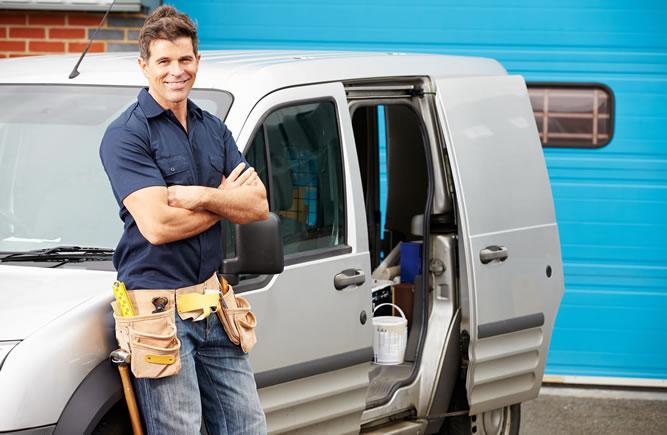Cost to Replace Floorboards and Joists
Last updated 6th August, 2025
Want to find out the costs of replacing floorboards?
In this article we discuss everything you need to know about floorboards and floor joists, including repairs and fees (on average it will cost you between £200 to £300).
Let's get started...
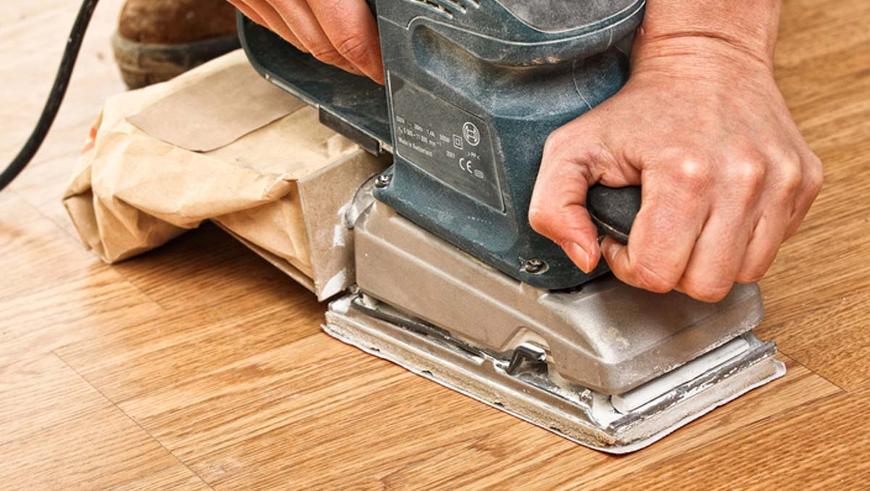
Table of Contents
- How much to replace floorboards?
- Supply cost to replace floorboards
- Labour cost to replace floorboards
- Additional floorboard replacement costs
- Factors that impact floorboards replacement & repair costs
- What does repairing floorboards involve?
- DIY repairing floorboards
- Types of floorboard repair
- Do my floorboards need repairing?
- Cost to remove floorboards
- FAQs
- How to find and hire a floorboard repairer
How Much to Replace Floorboards?
The cost to have broken floorboards fixed and loose floorboards screwed into place will probably end up around £200 to £300.
If you need to have creaky floorboards fixed with the lifting and refitting of a carpet a necessary part of the repair, you’ll likely pay between £150 and £200. The average cost of having a floor joist and several split floorboards replaced will end up around £300 to £500.
What can affect these costs?
How much you’ll need to pay to have floorboards repaired depends not only on the type of repair, as shown above, but also the size of the area, how accessible the area is and where in the UK you are located.
Floorboard Repair Price List
| JOB DESCRIPTION | AVG. COST | DURATION |
|---|---|---|
| Fix Creaky Floorboards | £150 - £200 | 1 - 4 hours |
| Fix Broken Floorboards and Screw Loose Floorboards | £200 - £300 | 1 day |
| Repair Floor Joist and Several Split Floorboards | £300 - £500 | 1 - 3 days |
Floorboard Replacement Price List
Cost of Replacing Floorboards (Single Room)
The following table estimates the cost of replacing floorboards for a single room in a home.
This factors in supply costs, labour costs and waste disposal costs, where applicable and based on the job taking 1 to 3 days to complete.
| TYPE | AVG. COST |
|---|---|
| Square-edge Softwood | £380 - £530 |
| Tongue and Groove Softwood | £380 - £640 |
| Square-edge Chipboard | £365 - £720 |
| Tongue and Groove Chipboard | £450 - £720 |
| Square-edge Plywood | £485 - £755 |
| Tongue and Groove Plywood | £570 - £870 |
Cost of Replacing Floorboards (Full House)
The table estimates the cost of replacing floorboards for a whole house, based on the job taking between 5 and 10 days to finish:
| TYPE | AVG. COST |
|---|---|
| Square-edge Softwood | £1,300 - £1,925 |
| Tongue and Groove Softwood | £1,240 - £1,780 |
| Square-edge Chipboard | £1,680 - £2,260 |
| Tongue and Groove Chipboard | £1,660 - £2,240 |
| Square-edge Plywood | £1,840 - £2,460 |
| Tongue and Groove Plywood | £2,420 - £3,410 |
Supply Cost to Replace Floorboards
We will now look at the average floorboards price if purchasing directly from a retailer. The supply cost of floorboards excludes the labour and waste disposal expenses.
On average, you can expect to pay around £1.35 to £2.50 per m² for square-edge softwood flooring or £1.35 to £2.85 per m² for tongue and groove softwood flooring.
In terms of chipboard flooring, on average it will set you back £6.00 to £8.20 per m² for the square-edge style or £5.75 to £7.90 per m² if it is tongue and grooved.
Square-edge plywood will likely cost between £7.80 and £10.40 per m². The floorboard cost for tongue and groove plywood will land around £12.80 to £17.50 per m².
Labour Cost to Replace Floorboards
Paid professionals will set a specific labour cost usually in the form of an hourly or daily charge.
These costs are included in the overall costs alongside supply costs and any additional expenses such as waste removal.
To have several floorboards repaired will come with an average labour cost of around £200 to £300.
Typical tradesmen costs are between £12 and £18 per hour to perform floorboard repair work. If you wish to have floorboards fixed and loose floorboards screwed into place, it will take around 8 to 12 hours on average.
It may take about 1 to 2 hours to remove the old floorboards and possibly less, depending on how many boards need to be removed. The bulk of the work will take approximately 6 to 10 hours with the likely clean-up lasting for 30 minutes to an hour.
The total duration of any given floorboard repair work will depend on the size of the room, the type of flooring and both the state and shape of the room.
New Floorboards Cost Breakdown Calculator
Individual costs of repairing broken floorboards (non-replacement) – Total Cost: £250
Materials
£25
Labour
£225
Waste Removal
£0
Additional Floorboard Replacement Costs
When having your floorboards repaired, there are many additional jobs you may wish to pay for.
These include but are not limited to treating woodworm, having laminate or wood flooring installed, getting a new carpet fitted and having a carpet or multiple carpets cleaned.
Treat Woodworm
Woodworm are the larvae of wood-boring beetles. The most harmful is that of the Common Furniture beetle. The damage itself usually occurs within the timber, making it difficult to spot.
On average, the woodworm treatment cost for a specialist to treat your home is between £100 and £150 per day.
Small holes in the wood and fine dust surrounding these openings are examples of signs to look out for. To have your home treated for every stage of woodworm will cost you around £500 to £800.
A woodworm survey, on the other hand, will only set you back about £50 to £80 and to have a single timber floor treated will probably cost between £100 and £140.
Wooden Floor Restoration
As part of repairing floorboards, you may need to completely restore wood flooring in order to get it back to its former condition.
Restoring wooden flooring in the UK typically costs between £240 and £900, depending on the floor size and restoration method required (such as sanding, staining, or refinishing). In some cases, tradesmen may charge around £20 to £25 per m² for restoration work if no actual repairwork is needed, or quote on the job as a whole once they've reviewed the extent of any damage.
Factors That Impact Floorboards Replacement & Repair Costs
The total floorboard replacement or repair cost will depend on a variety of factors including the type of repair, type of floorboard and accessibility.
Location of Property
The price of hiring a labourer tends to vary depending on where in the UK you live.
Carpenters, like most contractors in general, charge the highest rates in London and the South East of England, for example, while in the North of England, labour costs are generally cheaper.
Size of Area
Of course, how large the floor or floors are that you wish to have repaired will play a major role in determining the total cost.
Also, the more floors which need to be repaired, the more work will be needed and the higher the labour costs will be.
Type of Repair
There are many types of repairs which you may need to have performed ranging from having creaky floorboards repaired to having several split floorboards, and a floor joist replaced. Each repair comes with its own price tag.
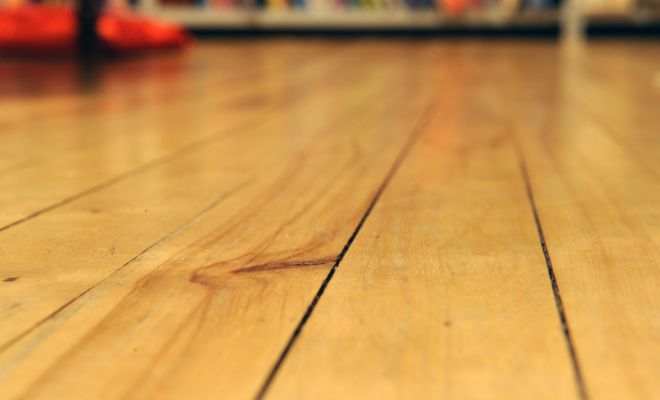
Type of Floorboard
As shown in the supply costs section, the price of floorboards depends on the type being used.
The average floorboards price range from £1.35 to £2.50 per m²for square-edge softwood floorboards to between £12.80 and £17.50 per m² if you wish to purchase tongue and groove plywood floorboards.
Ease of Access
How accessible the floorboards and each part of the room are will also shape the total cost of repair work.
An irregularly shaped room or floorboards which are difficult to open up, for example, can increase the overall cost.
This is because, in these scenarios, the work itself would take longer than an average floorboard repair job which would bring up the labour costs.
What Does Repairing Floorboards Involve?
Regardless of whether you intend to expose your floorboards or plan to have new flooring fitted over them, it’s essential that your floorboards are in good condition and firmly screwed or nailed to the joists beneath. The methods discussed in this section provide a broad overview of floorboard repairs and what exact work any flooring will need will vary from case to case.
Preparation
Before any repair work can be performed, it’s important that any necessary preparation is undertaken first. For floorboard replacements and some other types of repair work, appropriate measurements will be needed before the work can begin.
A replacement job will also require that an underlay be fitted before the new floorboards can be installed.
Repair Work
If you want to hide floorboard faults, one solution is to have carpet laid down while laminate flooring will display any significant defects in the flooring.
Older floorboards tend to be straight-edged thus lifting them is relatively easy if a wide-blade chisel is used.
Alternately, they can be bolstered so that the board can be prised up gently.
To have tongue and grooved floorboards removed is more challenging since the prior mentioned approach of lifting floorboards cannot be used here.
Instead, this work involves sawing through the tongue with a circular saw or a convex blade flooring saw.
This is prior to the board being levered up.
It’s imperative that when tongue and grooved floorboards are being removed, the joists are not accidentally cut into.
If they are damaged in the process, they’ll need to be replaced which would add to your expenses.
It’s important that the condition of floor joists is carefully checked when floorboards are being removed.
You should seek the advice of a professional if the floor joists are rotten or damaged.
Even experienced DIY enthusiasts may find rot assessments too difficult to perform accurately.
Loose floorboards can generally be fixed with ease simply by having their nails replaced with screws.
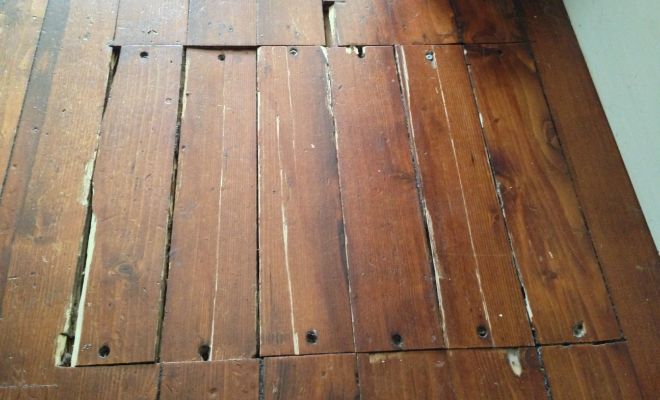
Once the nails are removed, the existing holes may be used for the new screws to fit into.
On the other hand, you may wish to have the new screws driven in next to the old nails with the latter remaining in place.
The screw holes will need a countersink before a wooden plug is made for a high-quality finish.
Floorboards which are warped and loose should be replaced.
For a floorboard replacement, the boards need not be matched once the same wood type is being used and there is a plan to sand the entire floor after the floorboards have been fitted.
Any screw heads and nails must be punched below the surface prior to sanding.
In some cases, split floorboards can be fixed with strong wood glue.
It can be applied to the crack before each edge is compressed together with wedges.
However, this approach will not prove sufficient if the split is jagged or large.
Severely damaged flooring will need to be replaced entirely or, alternatively, the damaged section could be cut out and replaced.
When the floorboard is being cut, the joist needs to be cut so that the ends can be tightly fixed.
If a perfectly sized replacement cannot be found, a slightly wider board can be purchased, and a professional can plane it to the correct dimensions.
Clean Up
The final stage of any flooring repair work will be the clean-up.
Work that involves waste materials will also require the use of a waste disposal service, whether it is with a skip or an alternative approach such as a man and van service.
If your floorboards happened to contain asbestos, a special asbestos waste disposal team would be needed.
DIY Repairing Floorboards
Floorboard repairs and replacements may be performed as DIY work.
Most of the risks associated with a DIY approach relate to the job being performed incorrectly.
Mistakes in repairing floorboards may simply fail to fix the problem or in the worst-case scenario, exacerbate the problem.
If the floor joists are rotten, it is best practice to seek professional advice. Dry rot spores can be harmful if inhaled.
Also, there is a risk of unintentionally damaging pipes or joists beneath the floorboards.
Each repair comes with its own level of difficulty.
For instance, repairing a squeaky floorboard is a relatively easy fix while repairing major damage or dealing with rotten flooring elements will prove more challenging.
You will save approximately £12 to £18 per hour due to the lack of labour expenses.
The total cost you will likely save will vary depending on the work being performed.
For example, you can avoid the cost of around £200 to £300 by doing repairs yourself, assuming you're fixing several boards at once.
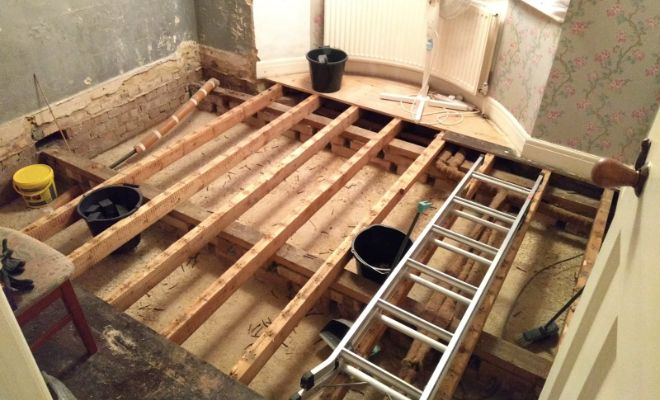
There are plenty of tools which you might need. The following tools may or may not be needed, depending on the job you are performing:
- Wide-bladed chisel or bolster
- Circular saw, or convex blade flooring saw
- Screwdriver
- Hammer
- Drill and twist drill bits
- Wedges
- Planing machine
- Thin blade knife
- Measuring tape
- Pencil
- Chisel
- Jigsaw
- Pry bar
- Wooden blocks
The following safety equipment should be used at all times or for a specific occasion, where stated:
- Latex gloves (for applying finishes)
- Protective gloves
- Safety glasses
- Ear protection (when using loud tools)
- Long trousers
- Workboots
- Full face shield (for grinding, cutting or chipping)
- Chemical splash goggles (for work which uses chemicals)
- Respiratory protection (for work that is messy, dusty or/and involves potentially harmful substances, such as removing dry rot)
Planning permission is not usually needed to repair or replace floorboards. However, you should contact your Local Planning Authority if you occupy a listed building.
Types of Floorboard Repair
There are many different types of floorboard fixes which you may wish to pay for or perform yourself.
This includes fixing issues like damaged joints, loose floorboards, creaky floorboards, woodworm and damaged floorboards.
The costs mentioned in the following section assume that you are paying a professional to perform the work.
Beyond the repairs listed below are other fixes such as joist repairs.
Creaky Floorboards
This issue can be solved with many different methods such as inserting shims into gaps, filling long gaps with construction adhesive, nailing a board along a warped joist or adding blocks to noisy joists.
You may also need to have a carpet lifted so that creaky floorboards can be fixed before the carpet is laid down again.
This will cost approximately £150 to £200 in total.
In general, having creaky floorboards repaired will cost £12 to £18 per hour plus any material and waste disposal costs.
Most of these repairs are relatively easy, although a job which involves taking up a carpet and laying it back down could prove quite difficult.
Loose Floorboards
Replacing the nails in floorboards with screws may be all that is necessary to fix loose floorboards.
A labourer may also choose to add the new screws next to the old nails. Either way, screw holes should be countersunk.
A wooden plug should also be made for the best finish possible. However, the floorboards will need to be replaced if they are warped.
To have loose floorboards fixed will likely cost between £200 and £350.
If you need to have several loose floorboards replaced, expect to pay around £350 to £500.
The initial fixes mentioned are straightforward but replacing several floorboards is of around medium difficulty.
Joint Repair
A popular method for dealing with laminate flooring involves first closely analysing an open joint to establish in what direction the board has moved.
A chisel and hammer should then be used to remove the skirting board on the side the floorboards have moved towards.
Upon removing the baseboard, it will be revealed which board is out of place.
With a hammer and tapping block, the board can be knocked back in place.
A wood glue may also be added to the crack between the boards to ensure that the issue doesn’t return.
Finally, the skirting board must be glued back together.
Hardwood gaps may be fixed with a variety of methods, ranging from adding wood strips to filling the gaps with rope.
Any of these jobs will set you back £12 to £18 per hour plus any material and waste disposal expenses.
Most of these fixes are relatively easy.
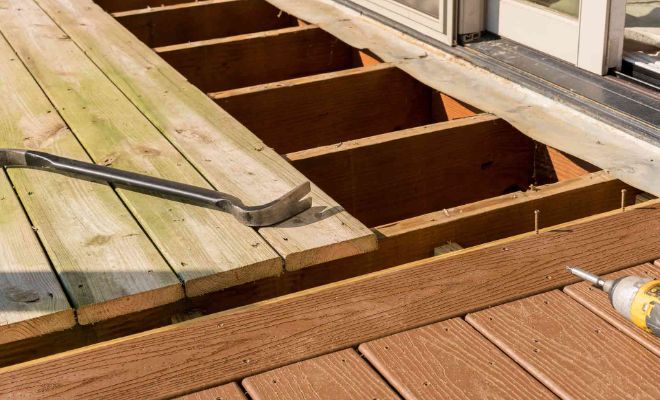
Woodworm Repair
Woodworm treatment is best handled by a professional unless you have sufficient knowledge and experience of such work.
Most woodworm treatments involve the use of chemicals. Such products are designed to absorb easily into the wood.
These treatments will not only kill off wood-boring insects, but they can improve the long-term capacity of your floorboards to resist new infestations.
The treatment needed will vary depending on the type of infestation present.
Treating woodworm is more challenging than most simple floorboard repairs.
In terms of costs, a woodworm survey will land around £50 to £80, to have a single timber floor treated will end up about £100 to £140 while having your home treated for every stage of woodworm will cost roughly £500 to £800.
Replace Floorboards
You may need to have your floorboards replaced because there are issues present (e.g. dry rot) which cannot be fixed, or you have decided to have it replaced for preferential reasons such as to improve the aesthetics of the room.
The first step of replacing floorboards is to acclimatise the new floorboards before measuring the room ahead of the installation.
The next stage will involve removing the current floorboards.
Replacing straight-edged floorboards involves inserting a bolster or wide-bladed chisel into the gap at the end of a floorboard and then prising the board up gently.
Once there is sufficient room, a claw hammer may be inserted into the gap to prise up the board.
To remove a tongue and grooved floorboard, a convex blade flooring saw will be needed.
Depending on factors such as the type of floorboards being fitted, it may be necessary to fit a waterproof membrane and remove skirting boards.
It’s important that any debris or dust surrounding the flooring area is cleaned up.
Next, a new underlay can be fitted before the new floorboards may be installed.
If you are having floorboards replaced for an entire room, it’s going to be a complicated and time-consuming job but having one or several floorboards replaced is less challenging.
A labourer is going to charge you around £12 to £18 per hour in installation costs for this work.
This will cover the removal and fitting work as well as additional work such as measuring the room and performing the clean-up.
In terms of the supply cost of replacing floorboards, laminate floorboards cost around £12 to £20 per m²as an overall average, solid wood flooring costs about £20 to £100 per m², engineered wood flooring will set you back about £25 to £35 per m², parquet floorboards cost around £35 to £65 per m²and you can expect to pay between £20 and £25 per m²for vinyl floorboards.
The total floorboard replacement cost will also include any waste removal expenses.
Do My Floorboards Need Repairing?
Knowing when your floorboards need to be repaired is essential to stop problems getting out of hand.
Some floorboard problems are more obvious than others. You may notice issues such as splits in your floorboards, open joints or overtly loose or squeaky floorboards.
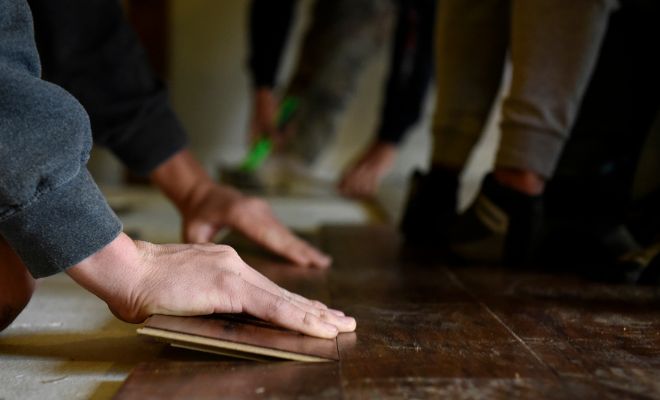
On the other hand, woodworm can be difficult to spot at first with subtle signs emerging before it becomes obvious. Such signs include small holes in the wood and fine dust surrounding these holes.
Here are some key things to watch out for with your floorboards:
- Squeaking or creaking floorboards.
- Floorboards that are warping or buckling.
- Cracks or splits in your floorboards.
- Floorboards that are loose or more spongy to walk on.
- An uneven surface when you're walking.
- Unusual smells coming from beneath the floorboards.
The cost of having floorboards repaired can vary greatly depending on the issue that needs to be fixed.
Cost to Remove Floorboards
You may want to remove your floorboards because they are simply beyond repair, to update the look of your room or to improve the sound and heat insulation qualities of your flooring.
The cost of having floorboards removed in labour will depend on how many you wish to have removed.
To have just several removed might cost you £12 to £28 in labour costs, assuming about one to two hours of work.
On average, a labourer will charge £12 to £18 per hour for floorboard removal work.
Removing floorboards is not exceptionally difficult although square-edged floorboards are easier to remove than tongue and grooved boards.
You may perform this work by yourself if you wish, although you should ensure that you are certain of what the job entails and that you’re following any necessary safety precautions.

Generally, waste can be disposed of through a skip or a man and van service.
If your flooring happens to contain asbestos, firstly, you should not perform the removal yourself unless it is allowed under the Control of Asbestos Regulations 2012 and you are sure of what is involved.
Secondly, asbestos and any other dangerous fibres, chemicals, etc. must be disposed of by specific waste disposal teams.
Hiring a skip will probably cost around £100 to £240.
The charge of asbestos waste removal, for example, could land somewhere in the range of £0.22 per kg to £1 per kg.
FAQs
You may use wood strips, wood putty or rope to fill gaps.
How to Find and Hire a Floorboard Repairer
If you lack the necessary knowledge or skills to perform floorboard repair work, you may prefer to hire a professional contractor to undertake the work.
If asbestos is present in your floorboards, then in most cases, an appropriate and qualified professional must be hired for such work.
You’re looking at paying around £12 to £18 per hour to hire a labourer to repair floorboards on top of any supply and waste disposal costs.
To find the right person for the job, you should look for someone with plenty of experience and ideally someone who has accreditation, liability insurance and can provide you with examples of past work.
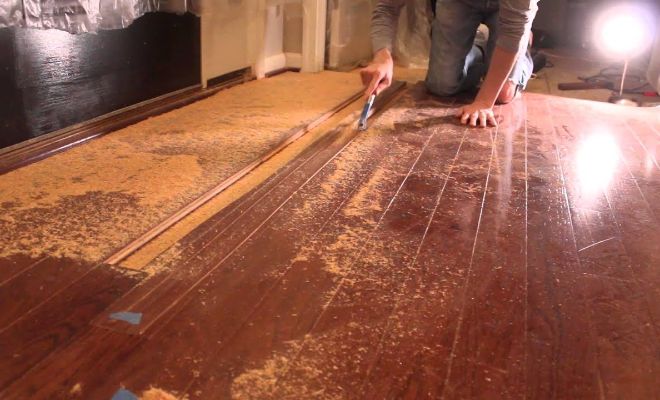
If they are a part of a labourer association, you can contact their association to request information on the contractor’s experience and qualifications.
Alternatively, you may decide to check out any web or social media pages the contractor has.
Professional contractors generally do not require qualifications, unless for specific work like certain forms of asbestos removal.
Most labourers are highly experienced individuals who learned on the job and developed their skills through years of practical work.
